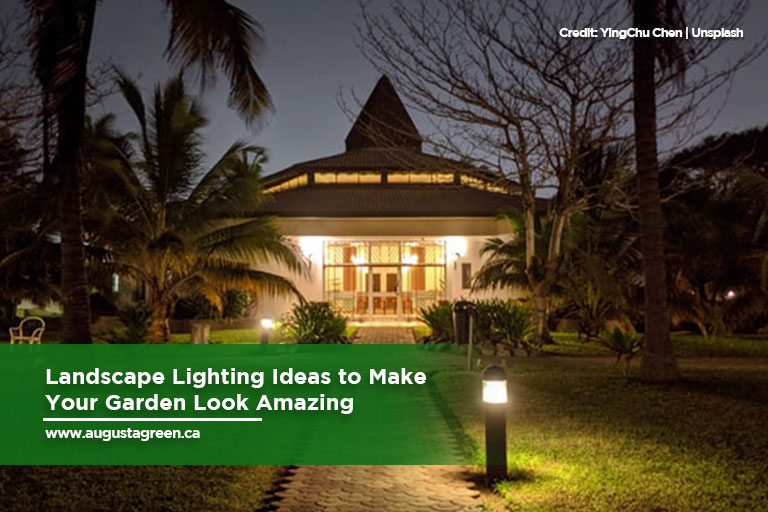Creating a family garden is always a good idea, no matter how big or small your free lot is. Gardens are special places with healing properties that benefit you and your family in a variety of ways. Spending time in nature has also been shown to alleviate stress and boost our mood. Green places have a significant impact on people’s mental health.
If you want to enjoy your garden a bit more, try sprucing it up by adding some lights. Having the right amount and quality of landscape lighting is critical in any garden design.
With your beautifully illuminated gardens, you can be sure to enjoy socializing and relaxing alfresco candlelit dinners long after the sun sets.
Landscape Lighting Strategies: What Is Best For Your Garden?
Landscape lighting has a wide range of applications. It may be used as an aesthetic element as well as a security feature for your home and yard. These lights can be extremely bright, which can add a pleasing glow to your home. They can also be set to warmer tones to create a homey ambiance.
Let’s have a look at some of the many lighting strategies for your garden.
- Uplighting
Uplighting is beneficial for walls, plants, and trees. To accomplish this, simply position a lighting fixture on the ground with the light beam aimed overhead. Experiment with the aesthetic by placing the light in before or behind the object you’re illuminating.
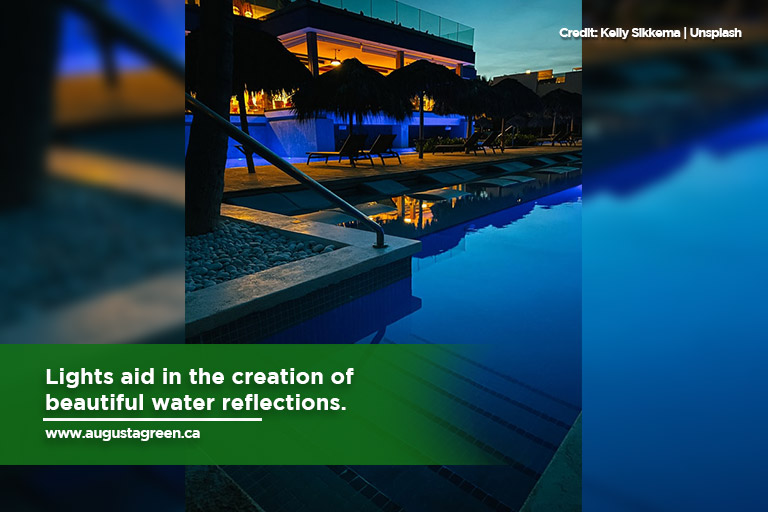
- Mirror Lighting
If you have a small pond, spa, or fountain, you should use mirror lights. By lighting up the plants that surround these pools, the light creates a reflection of the plants. You’ll notice this when you’re on the other side of the water.
- Highlighting
When you want to draw attention to something in your garden, such as a flower or a shrub, you’ll most likely utilize highlighting. Simply direct the light toward the object you want to emphasize. Experiment with lighting to see what works best in your garden.
- Low Voltage Lighting
Low-voltage lighting improves the aesthetic value of your property while also increasing safety. Because the bulbs are significantly smaller, the designer has more freedom to experiment and can be more creative. It also provides for improved lighting in cramped areas.
Garden Lighting: Features and Options
Landscape lighting has the ability to completely change the look of your property. Landscape and garden lighting has the advantage of allowing you to decorate your property without taking up a lot of areas.
Below are some of the various lighting features and options available to you.
- Spotlights
Spotlights are the finest solution for illuminating a specific area or object. Spotlights come in a variety of brightnesses and sizes and are widely used to illuminate plants, trees, and monuments. Moonlighting can also be achieved with the use of spotlights. It’s commonly hung at a height of 15-30 ft and, when aimed correctly, gives the impression that the moon is beaming down on the object.
- Floodlights
Floodlights are the greatest option for lighting vast areas. Floodlights are commonly used to illuminate driveways, but they can also be utilized to illuminate the yard. Floodlights have wide beam angles, and the further away you place them, the more area they cover.
- Up/Down Lights
These lights are suitable for both indoor and outdoor use. You can use these lights to draw attention to some of your garden’s most noteworthy features. It all comes down to your personal taste when it comes to these types of lights. Installing up/down lights, however, does not adequately illuminate the garden because they are primarily intended to emphasize certain features only such as walls.
- Step Lights
When put near stairways and railings, this outdoor lighting is extremely vital. These lights aid in determining the dimensions of the steps, resulting in a safer environment for you and your visitors. It can be simply put in a variety of locations, so installation will not be a problem. The correct step lights will create a dramatic and safe ambiance in your home’s outside space.
- Garden Lights
The most typical application of garden lights is to showcase plants, flowers, and bushes. The light appears to be shaped like a mushroom since its orientation is downward and somewhat outward. Because the bulbs are concealed, the plants are accentuated without drawing too much attention to them.
- Bollard Lights
Bollard lights are frequently used to illuminate walkways and driveways for safety reasons. It’s commonly round or square in shape, with a length of 2 to 4 ft. The wattage of these bollard lights will be determined by the size of the area you intend to illuminate. The higher the wattage, the more light is produced.
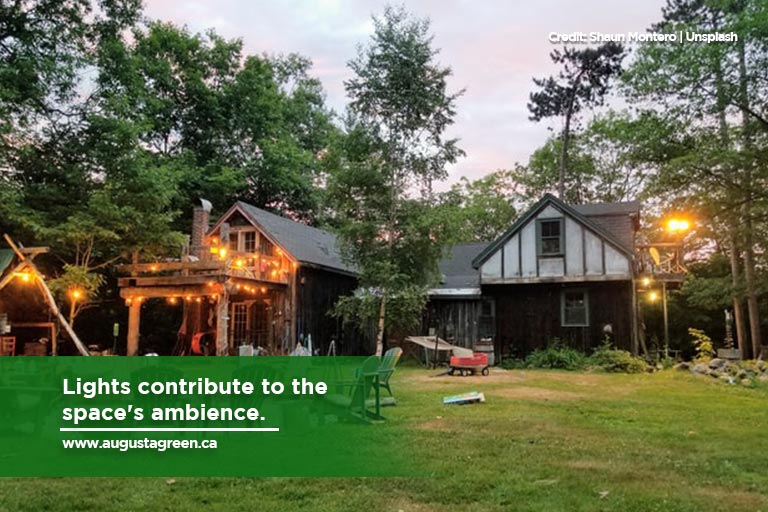
- String Lights
String lights are the way to go if you want a more understated lighting arrangement. String lights, like any other type of outdoor lighting, can survive the elements. Before you buy them, make sure to verify the Ingress Protection grade. Furthermore, because string lights require the usage of extension cables for electricity, it’s a good idea to have an outside extension cord on hand as well.
Be Aware of Your Surroundings: What Does Your Landscape Need?
It’s not as simple as picking what looks best for you when it comes to landscape lighting design. In fact, there are so many variables to consider that most individuals simply hire a professional to handle it for them rather than the do-it-yourself outdoor lighting strategies.
Before you invest in landscape lighting, there are a few things to think about.
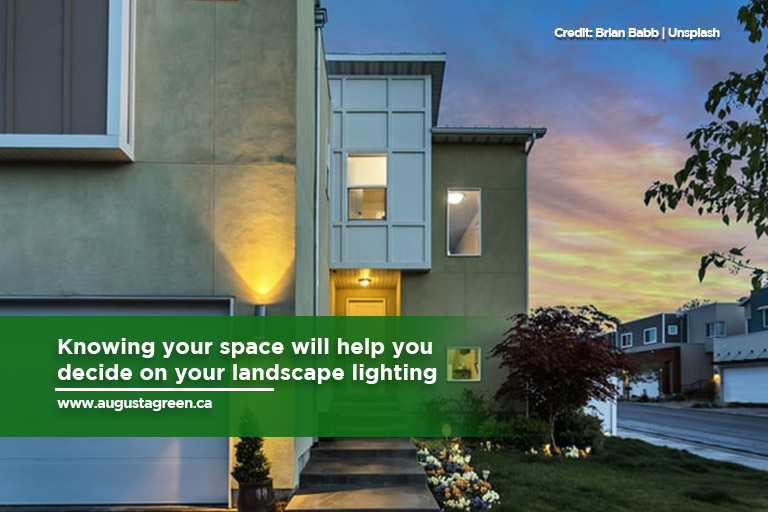
- Understanding your site
Everything starts with the location. Some lights will work in different weather situations, while others will not. To establish how much light you need, what type of light you require, and what type of light best meets your design goals, you must first understand the conditions in your area.
In Ontario, for example, the winter season brings more rain. So, if you live in Ontario, choose landscape lighting that can be used effectively during the rainy season.
- Remembering the audience
It’s not just about you when it comes to landscape lighting. It’s also about your family, friends, and anyone else that wants to come to your house. It’s preferable to have the deck or patio steps illuminated for senior individuals to help them navigate the steps.
When determining how to execute your landscape lighting design, consider these questions:
- What will you do with the yard?
- How frequently do you make use of it?
- What budget have you set aside for this project?
- Style/theme
Before you finalize the design of your home’s exterior, you must first decide on the style and theme of your garden, as well as your landscape lighting design aim. Examine the size, shape, and current design of your space to see whether it will work with your idea and if it is the best option available.
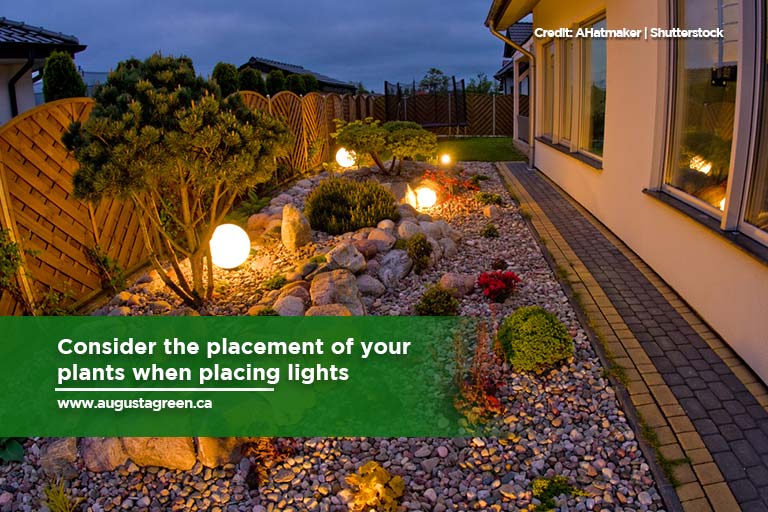
- Plant layout
From the standpoint of a designer, plants serve three purposes: beauty, structure, and function. Your plants can be thought of as a long-term element of your garden. While it is possible to reorganize them to make them look better. It’s also a good idea to work with the plant arrangement you already have. Plants should be considered early in the design process.
- Paying attention to detail
Pay close attention to the details, even the little ones. Plant colours, shapes, and sizes may appear insignificant, yet they can have a significant impact on the lighting design process. Consider all of the items and areas in your area to get the most out of your landscape lighting design.
- Light Texture and colour
You’ve already learned about the various outdoor lighting options, lighting strategies, and the factors you need to consider before you select a design. This time, here are some things you need to think about if you want more texture in your outdoor lighting.
As you went along with your design process, you must have thought about how to add more landscape lighting colours, how bright landscape lighting should be, and how much light you should be putting in. One good piece of advice is to walk through your space during the nighttime and take note of the things you’d like to highlight, your best spaces, and the areas you’d like to look improve.
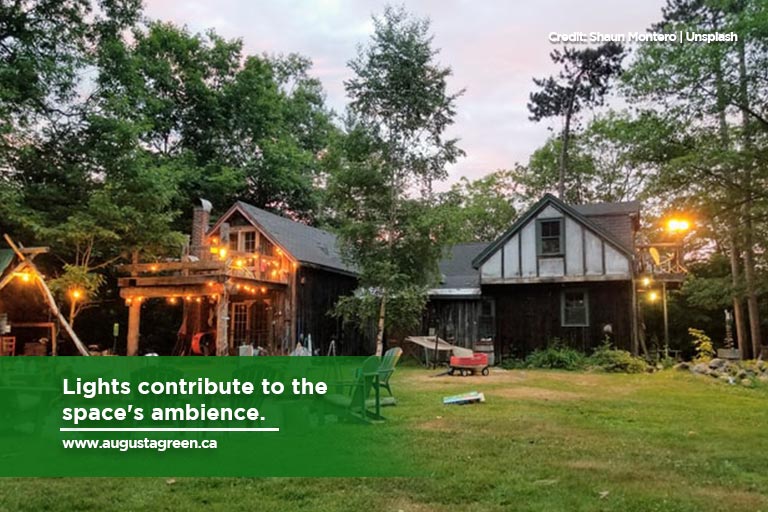
- Placement
When it comes to creating a good lighting design, the location of your lights is crucial. Remember what you noted on your nighttime walks and double-check that the lights are placed exactly where you wanted them to be.
- Degree of light
The brightness level is also a significant consideration. For example, suppose you have some string lights strung across your patio and want to host an intimate meal. The brightness of your lights will play a role in the success of your dinner party. After all, no one wants to eat in a dimly lit environment where they can’t see each other or their food.
- Colour Schemes
When picking what to light and where to do it, colour and design, in addition to the other factors, are critical. Consider the colour palettes you want to highlight in your landscape lighting design. Perhaps you want to emphasize a colour scheme in one area of your garden and another colour palette in another.
Tips for Lighting Your Garden for Fall and Winter
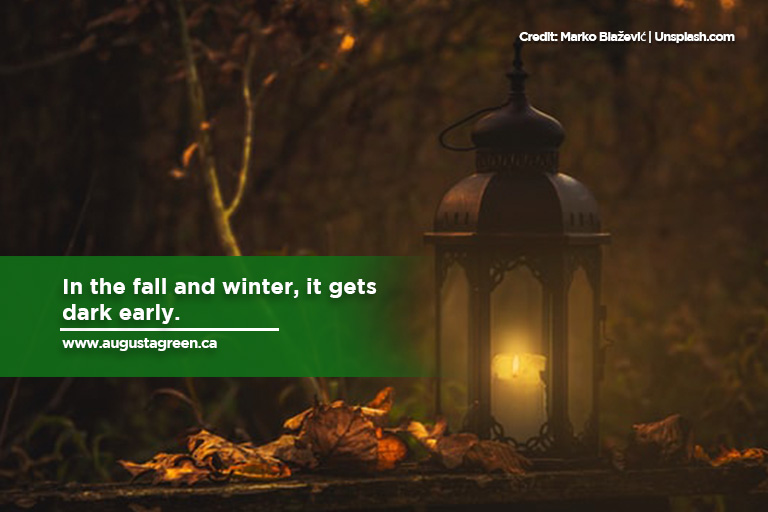
Fall is almost approaching, and if you haven’t already adjusted your outdoor landscape lighting design, now is the time. In certain parts of the world, such as Canada, the sky begins to darken as early as 4 p.m. during the winter. As a result, your lighting must be able to adapt to the darker and colder seasons. Canada’s outdoor landscape lighting must be tailored to the country’s climate. Here are two crucial pointers for illuminating your landscape in the fall.
- Avoid overlighting
It’s natural for us to have the urge to use more light when it’s dark. But it’s also important to remember that excessive lighting can be disturbing for neighbours. Ensure that you have the right amount of light only.
- Use only halogen lights on the ground
Lighting can be reduced or totally masked during the winter, especially during the snowy months. If you utilize LEDs on the ground, they are more likely to be covered by snow, so you won’t get the full advantage of your investment. It’s a decent rule of thumb to use halogens on the ground.
Choosing and designing your landscape lighting can sometimes be a difficult process. Always consider the services of a professional to make the most out of your landscape. Specialists in landscape lighting can surely offer you the best design and alternatives for your garden.
Augusta Green Sprinklers provides landscape lighting services for Toronto, Mississauga, and Oakville residents. Call us at 416-227-1666, send us an email at admin@augustagreen.ca, or use our website to arrange our services.

